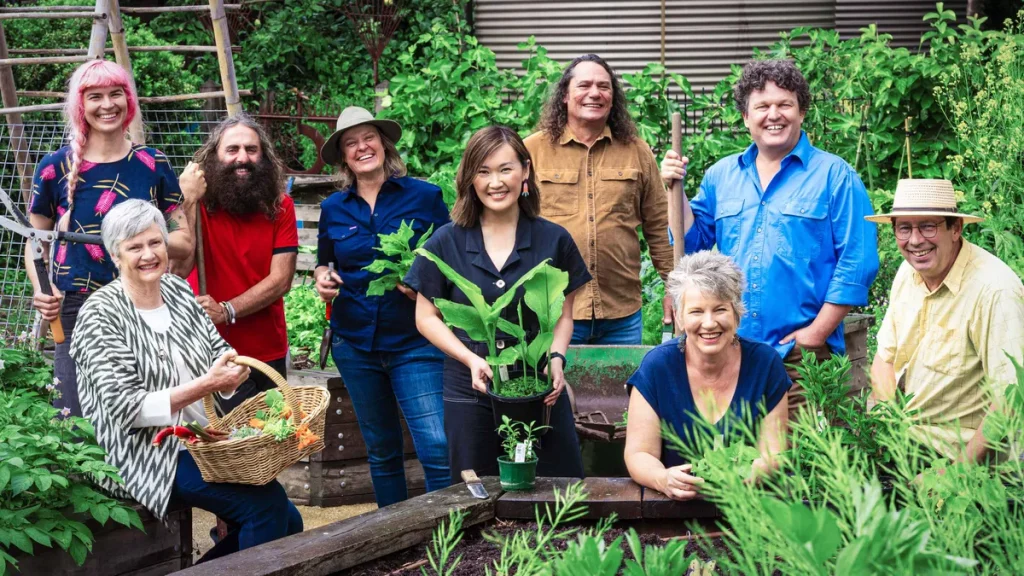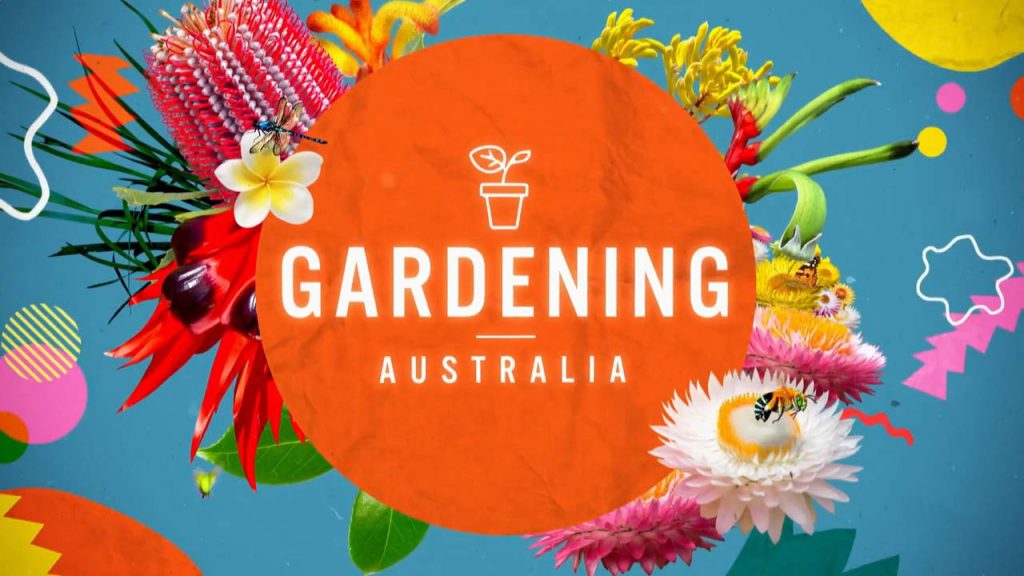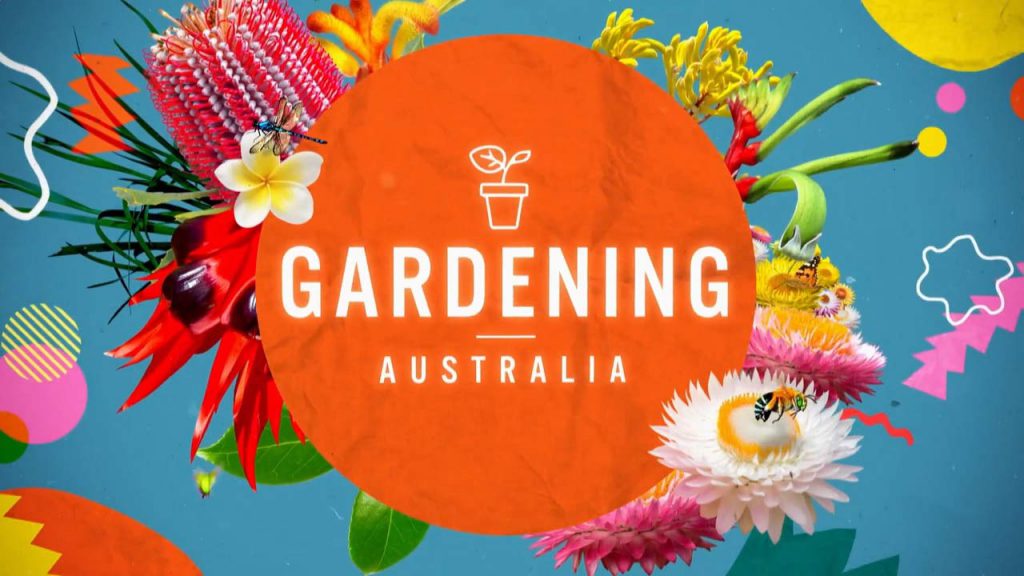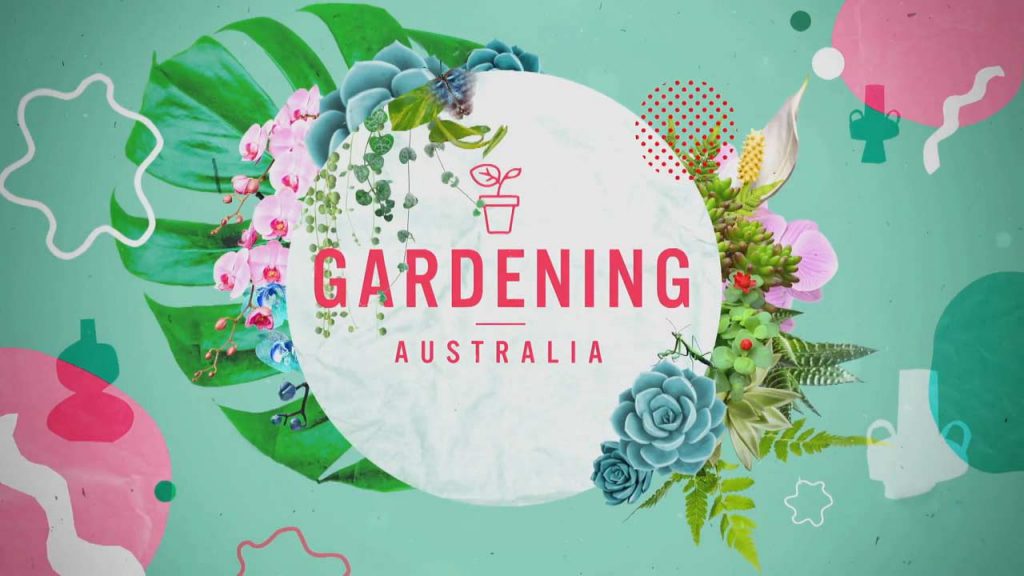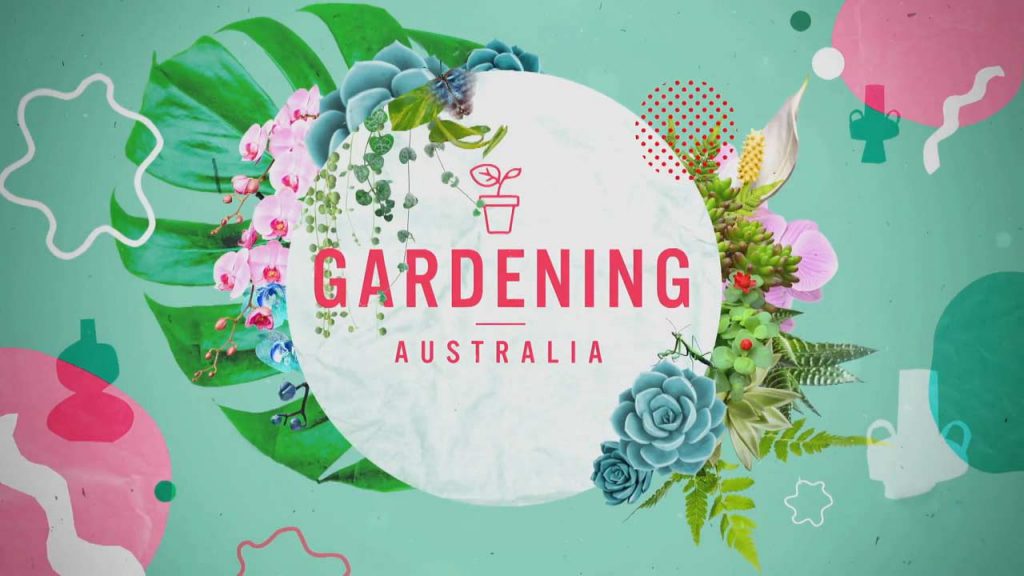Gardening Australia episode 33 2023 – In this week’s exciting episode, we embark on a delightful journey into the world of gardening and nature. First, we join Clarence, a passionate enthusiast of indigenous plants, as he meticulously assembles a stunning bouquet crafted exclusively from native flora. His expertise in selecting and arranging these local blooms highlights the beauty and diversity of our natural heritage.
Next, we visit Tammy, who has ingeniously transformed a challenging sloped terrain into a breathtaking garden. This creative endeavor showcases Tammy’s remarkable ability to adapt and innovate, turning what many would see as a limitation into a flourishing, multi-level landscape that invites awe and admiration.
Our adventure continues with Jerry, who takes us on an informative tour of a state-of-the-art hydroponic nursery. This futuristic farming method, which utilizes nutrient-rich water instead of soil, represents the cutting edge in sustainable agriculture. Jerry’s enthusiasm and knowledge about hydroponic systems provide a fascinating insight into how technology is revolutionizing the way we grow food.
Meanwhile, Costa embarks on a meaningful visit to a dedicated team engaged in growing food specifically for wildlife. This heartwarming segment not only sheds light on the importance of supporting our ecosystem but also illustrates the deep connection between human activities and the wellbeing of our natural world.
In another segment, we meet Sophie, who tackles the challenge of controlling an aster overgrowth. This task, while seemingly mundane, is crucial for maintaining ecological balance and ensuring that native species thrive. Sophie’s diligent efforts in managing this overgrowth demonstrate the importance of proactive environmental stewardship.
Finally, our episode culminates with an enlightening encounter with a forest therapy guide. This unique approach to wellness, which blends nature immersion with mindfulness practices, offers a refreshing perspective on the therapeutic benefits of spending time in the great outdoors. The guide’s expertise in leading us through this rejuvenating experience leaves us with a deeper appreciation for the natural world and its profound impact on our mental and physical health.
Join us as we explore these diverse and inspiring stories, each a testament to the wonders of nature and the human spirit’s ability to nurture and protect it.
Gardening Australia episode 33 2023
Cultivating an Indoor Garden of Australian Natives: A Guide to Stunning Home Bouquets
Embracing the Beauty of Australian Native Plants for Indoor Decor
Australian native plants have gained immense popularity for their unique beauty and versatility, particularly in creating stunning indoor arrangements. Unlike their counterparts in retail florists, these native species offer an authentic touch of Australia’s natural charm to our homes. Here, we delve into the world of growing and arranging Australian native plants, providing you with the knowledge to transform your indoor spaces with these remarkable species.
Understanding Australian Natives: Beyond the Common Garden Varieties
Before we explore the specific plants ideal for indoor bouquets, it’s crucial to understand what constitutes an Australian native plant. This term refers to species indigenous to Australia, not including plants like proteas and leucadendrons, which originate from southern Africa yet share a Gondwanan lineage. This distinction helps in selecting true native varieties that thrive in Australian conditions.
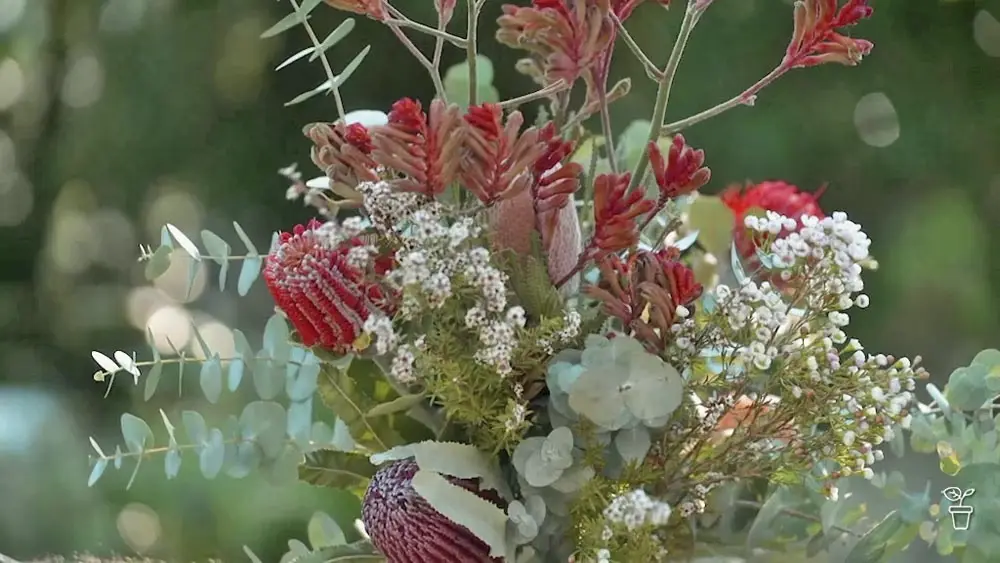
Top Choices for Indoor Arrangements: A Selection of Native Beauties
Banksias: A Diverse and Striking Option
Banksias are a quintessential choice for indoor arrangements. With a species for nearly every Australian climate, they offer a vast range of colors and shapes. Their longevity as cut flowers makes them a practical and visually appealing choice.
Hakeas: Lasting Beauty with a Unique Appeal
Hakeas are another excellent choice for indoor displays. Varieties like Hakea francisiana and Hakea bucculenta are notable for their softer foliage and striking flowers. Their woody seedpods add an intriguing element to arrangements. When pruning for cuttings, ensure to leave some foliage for healthier regrowth.
Waratahs: The Spectacular Showstoppers
The Waratah, with its spectacular blooms, is a true showstopper. While they require specific conditions like shelter, consistent moisture, and good drainage, they can thrive in pots with quality potting mix, making them suitable for indoor gardens.
Grevilleas: A Diverse and Allergen-Aware Choice
Grevilleas are diverse and can last well in vases. However, it’s important to note that some grevilleas have sap that is a common allergen. Therefore, handle with care, using gloves and eye protection, and place them where they can be admired safely.
Pelargoniums: The Charming and Self-Seeding Varieties
Pelargoniums, though short-lived, add a lovely touch to any vase and generously self-seed in the garden, ensuring a continuous supply for future arrangements.
Kangaroo Paws: The Classic with a Caution
Kangaroo paws are iconic cut flowers, known for their unique appearance. However, be cautious of the hairs on the flowers, which can be irritants.
Everlasting Daisies: The Durable and Colorful Choice
Everlasting daisies thrive in various conditions in southern Australia. Their papery flowers not only add color to arrangements but also dry beautifully, offering a long-lasting decorative element.
Incorporating Foliage: The Finishing Touch
Don’t overlook the importance of foliage in your arrangements. Grey and green leaves can beautifully offset the vibrant colors of flowers, and growing them at home can be a cost-effective solution.
Grasses: Adding Elegance and Interest
Grasses, with their soft foliage and elegant seedheads, can add a unique touch to any bouquet, enhancing its overall aesthetic appeal.
Tips for Arranging Your Native Bouquet
When arranging your bouquet, start with a central stem as the focal point. Build around it, turning the arrangement and adding stems at various points. This method creates a balanced and visually pleasing bouquet.
Responsible Picking: Protecting Our Natural Heritage
A vital reminder when cultivating native plants: never pick wildflowers from National Parks or Reserves. This practice ensures the protection and preservation of our natural heritage
By selecting the right Australian native plants and applying these tips, you can create stunning indoor arrangements that bring the essence of the Australian landscape into your home. Not only do these plants offer a unique aesthetic, but they also connect us more deeply with our natural environment. Embrace these native beauties and transform your indoor spaces with their unparalleled charm.
Mastering Container Gardening: A Comprehensive Guide to Growing Food at Home
Unlocking the Potential of Container Gardening: Growing Food in Limited Spaces
In the realm of urban gardening, container gardening has emerged as a beacon of hope for those seeking to grow their own food, even in the most constrained spaces. The beauty of container gardening lies in its versatility and adaptability, making it an ideal choice for urban dwellers with limited garden space. Whether it’s a balcony, patio, or a small backyard, containers can transform these spaces into thriving food gardens.

Choosing the Right Plants for Your Container Garden
When embarking on a container gardening journey, selecting the right plants is crucial. Ideal candidates for container gardening are those that thrive in confined spaces and require a moderate amount of sunlight. Vegetables like lettuce, especially cut-and-come-again varieties, are perfect for containers due to their continuous yield and minimal space requirements. Similarly, leafy greens such as kale and silverbeet, along with herbs like chives and parsley, are excellent choices. These plants not only adapt well to container environments but also provide a constant supply of fresh produce.
Sunlight and Watering: Key Factors for a Thriving Container Garden
Sunlight and watering are pivotal in the success of a container garden. Most vegetables and herbs require approximately six hours of sunlight daily to flourish. It’s essential to position your containers in a spot that receives ample sunlight while also being mindful of the water needs of your plants. Containers tend to dry out faster than traditional gardens, so regular watering is necessary to keep the soil adequately moist.
Vigilance Against Pests: Identifying and Managing Fire Ants
In any garden, vigilance against pests is paramount. One particular pest to be wary of is the fire ant (Solenopsis invicta), a dangerous and aggressive species. Fire ant nests are typically found in open spaces and can be identified by their unique appearance, resembling finely sieved soil without a distinct opening tunnel. These nests can be flat or raised and are often located near piles of mulch or open lawns.
Responding to Fire Ant Sightings
If you suspect the presence of fire ants in your garden, immediate action is recommended. It’s crucial to report sightings to local pest control authorities, such as the National Fire Ant Eradication Program. Early detection and control are vital in preventing the spread of these invasive pests.
Seed Germination: Patience and Persistence in Gardening
Seed germination is a process that varies greatly among plant species. Some seeds sprout within a few days, while others can take months or even years. Patience is a virtue in gardening, especially when dealing with seeds like the Dianella revoluta var. revoluta, which can have a prolonged germination period. It’s important to not lose hope and to give seeds adequate time to germinate. Often, seeds will sprout unexpectedly, rewarding the gardener’s patience and care.
Tips for Successful Seed Germination
- Choose the Right Container: Ensure your container is large enough to accommodate growth and has proper drainage.
- Use Quality Soil: Invest in high-quality potting mix that provides adequate nutrients and retains moisture.
- Maintain Consistent Moisture: Keep the soil moist but not waterlogged to encourage germination.
- Provide Adequate Warmth: Some seeds require warmth to germinate, so consider placing your containers in a sunny spot or using a heat mat.
In conclusion, container gardening offers a flexible and rewarding way to grow food in limited spaces. By selecting the right plants, ensuring adequate sunlight and water, being vigilant against pests like fire ants, and understanding the intricacies of seed germination, anyone can create a successful and productive container garden. Remember, gardening is a journey of learning and growth, and with patience and perseverance, it can be an incredibly fulfilling experience.
Revolutionizing Urban Agriculture: The Rise of Hydroponic Herb Gardens
Embracing a New Era of Gardening: The Hydroponic Advantage
In the bustling urban landscapes where space is a premium, innovative gardening techniques are reshaping our approach to agriculture. Among these, hydroponic herb gardening is emerging as a game-changer, allowing urban dwellers to cultivate lush gardens in limited spaces. This method, which forgoes traditional soil-based cultivation, offers numerous advantages, making it an ideal solution for city environments.
The Hydroponic System: A Closer Look
At its core, hydroponic gardening involves growing plants in a water-based, nutrient-rich solution. This method eliminates the need for soil, instead utilizing a system where water and nutrients are delivered directly to the plants’ roots. The beauty of this system lies in its simplicity and efficiency. With the use of a timer and pump, the nutrient solution is circulated, ensuring that plants receive the perfect amount of nourishment.
The Ideal Growing Medium
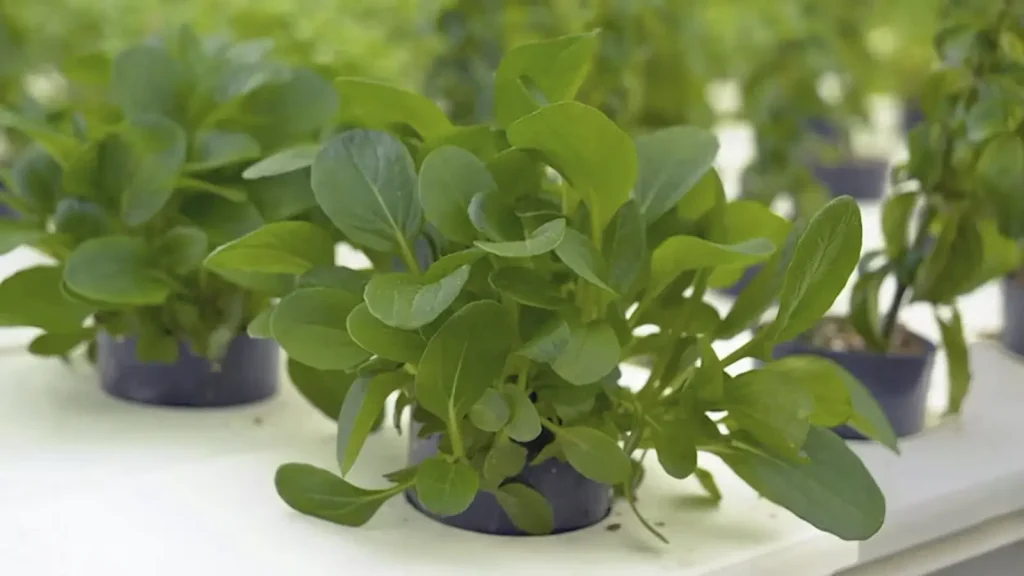
In a hydroponic setup, the growing medium plays a crucial role. Most commonly, a combination of washed river sand and coir coconut fiber is used. This mix ensures excellent water retention while providing the necessary support for plant roots. Additionally, a layer of vermiculite on top aids in seed germination, creating an ideal environment for young plants to thrive.
Nutrient Formulation: Tailoring for Success
One of the keys to successful hydroponic gardening is the nutrient solution. While pre-mixed formulas are readily available, there is also the option to create custom mixes. By adjusting the nutrient composition, gardeners can cater to the specific needs of their plants, resulting in healthier, more robust growth.
Pesticide-Free and Eco-Friendly
A notable advantage of hydroponic herb gardens is their inherent resistance to pests and diseases. This significantly reduces, or even eliminates, the need for pesticides. Many hydroponic gardeners employ natural pest control methods, such as introducing predatory insects, to maintain a healthy ecosystem.
Maximizing Space: Under-Bench Gardening
Innovatively, the space under the hydroponic benches can be utilized for cultivating other plants. This area is ideal for growing flowering plants and those that do not thrive in the hydroponic system above. This efficient use of space not only maximizes yield but also contributes to biodiversity in the garden.
The Versatility of Herbs in Hydroponics
Hydroponic systems are particularly well-suited for growing a wide variety of herbs. From culinary staples like coriander and kohlrabi to more exotic choices like komatsuna and mushroom plants, the possibilities are endless. Some herbs are even grown as microgreens, offering a fresh, nutrient-rich option for chefs and home cooks alike.
Environmental Benefits: A Sustainable Choice
The environmental footprint of hydroponic herb gardens is minimal. The closed-loop system ensures there is no water runoff, making it a water-efficient method. Additionally, by growing herbs locally, we reduce the carbon footprint associated with transporting food over long distances.
The Future of Urban Gardening
Hydroponic herb gardening is more than just a trend; it’s a sustainable solution for the future of urban agriculture. By embracing this method, we can transform our urban spaces into green, productive areas, bringing fresh, healthy produce closer to our homes. As we continue to innovate and refine these systems, the potential for hydroponic gardening in urban environments is boundless, offering a green beacon of hope for the future of our cities.
